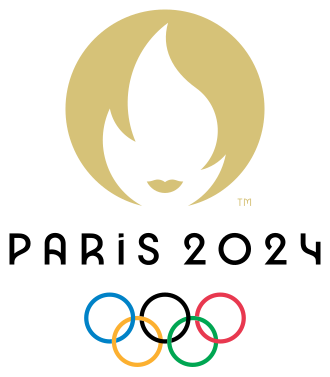Since I don’t have cable, I had to rely on NBC’s YouTube clips. As a result, I mostly watched the US-dominant events, and track and field in particular. There is something visceral about seeing peak-performing men and women outrunning each other. As Woody Allen famously said, after skipping the Oscars despite winning the best picture, you can objectively be the “best” only in sports. Here are my top ten Olympics moments (with hyperlinks) in no particular order.
1. Best stride: Rai Benjamin’s last leg in the 4 * 400 m men’s relay.
I took a movement class during the Olympics, and our teacher showed us a clip of a running cheetah as the ideal for which to aspire. The cheetah’s strides were fluid, its eyes focused ahead and its head steady. Rai Benjamin’s anchoring run in the 4* 400 m men’s relay was a sight to behold. He ran like a beautiful, well-oiled machine. He was erect but not stiff and ran freely with measured and long strides. All the while, Botswana’s 200 m champion, Lesile Tebogo, was hot on his heels (the most exciting sight of the Olympics for me). In the last twenty-five meters, Tebogo stepped up his gears with a grimacing run, but Benjamin held him off; his strides lengthened, but his posture remained majestic, and he barely broke into a sweat (Tebogo could be seen recovering lying on the ground). The relay was also interesting stylistically. The methodically trained US runners ran differently from the Botswana runners, whose bushmen roots were evident, especially the third leg, Anthony Pesela, who brilliantly set up the nail-biting last leg.
2. Best sprint: T T Terry in the 4* 100 m women’s final
USA’s T T Terry rightly proclaimed she is the best second-leg runner in the 4* 100 m relay. I was already a fan after seeing her run in the World Championships in 2023, where the US beat the favorites Jamaica. You must be fast in the 100 m, but TT sprints like a baby stallion with short, brisk strides. Although TT gets overshadowed by teammates Sha” Carri Richardson and Gabby Thomas, she has a considerable fan following for her speed and goofy motorcycle-style celebration after winning her individual events.
3. The best underdog story: Cole Hocker’s gold in the 1500 m
Although Cole Hocker is known to be a dangerous finisher, all eyes were on the battle between the two favorites, Britain’s World Record holder, Josh Kerr, and Norway’s Tokyo gold medalist, Jakob Ingerbrigsten. Even their attention was on each other. Hocker began to accelerate in the last 100 m, but Ingerbrigsten cut him off. You can see Hocker slowing down to avoid colliding with Ingerbrigsten. As he was rethinking his strategy, the gap opened again, and Hocker ran through it for the gold. Hocker calls it divine intervention because he was planning to run to the outer lane after being blocked. Hocker’s achievement is even more remarkable because he had to recoup just 50 m from the finish line. In the meantime, another underdog, America’s Yared Nuguse, suddenly accelerated to take the bronze, leaving Ingerbrigsten without a medal and almost pipping Kerr for a silver.
4. Revenge is best-served gold: Sha” Carri Richardson surveys her field before racing to the finish line (4*100 m women’s relay)
This was probably the most challenging race because Sha’ Cari started from behind in a 100-meter last leg yet accelerated, surveyed the field, and sprinted to the gold. This was her revenge against her detractors after being convincingly beaten in her favorite 100-meter race by Saint Lucia’s Julien Alfred. This relay, and seeing four beautiful women running sublimely, will never get old.
5. Most dominant: Sydney Maclaughin-Levrone in the 400 m hurdle (and the 4 *400 m relay)
Although I had no idea who she was before the Olympics (she’s quite the glam gal), watching her run brought a lump to my throat. Here is a bankable athlete who gets the job done without any fuss. Her running, like her, is sturdy yet smooth. She set the world record in the 400 m hurdles, which is probably the most difficult event because it is like a race car having to run over bumpers on the road (according to Rai Benjamin, the male gold medalist). Probably because of her faith, there is something special about Sydney both on and off the field; she’s the calm general bringing the troops safely home. The 400 m hurdle race also proved that the winner takes it all; American Anna Cockrell’s remarkable silver almost went unnoticed, although she beat the Dutch sensation Femka Bol.
6. Wholesome dominance: Katie Ledecky in the 1500 m freestyle swimming
My introduction to Ledecky was seeing a little girl swoon when Ledecki looked her way. Ledecki is like good bread, wholesome and fulfilling, and the 1500 m was more satisfying than exciting; Ledecky moved ahead of the group with each lap, and towards the end, the camera had to zoom out to catch the rest of the field (this happened in the last leg of the 4* 400 m women’s relay as well). As the most decorated American female athlete, Ledecky carries her success lightly and gamely responds to dumb retirement questions, saying she hopes to compete in the LA Olympics.
7. Biggest redemption story: Novak Djokovic finally wins his Olympic gold
Rabid Federer fans like me have a contentious relationship with Djokovic and love to hate him, although we respect him. So, I was firmly on Alcaraz’s side in the finals but teared up seeing Djokovic’s tears flow after winning that elusive gold. I call it his redemption because this is his fourth Olympics; imagine peaking after your almost two-decade-long career, but that’s typical Djokovic. Surprisingly, there is no video of his medal ceremony anywhere.
8. Most wholesome Olympic short: Tom Daly jumping on the cardboard beds in the Olympic village
Daly also had a redemptive Olympics like Djokovic. He won the silver after coming out of retirement to try to win a medal with his kids watching. But his childlike yet cheeky short testing the controversial cardboard beds in the Olympics village was vintage Daly: cute and up yours.
9. Most loved celebrity: Tom Cruise’s closing ceremony stunt.
Frankly, I found Tom Cruise’s live jump underwhelming (in contrast to Daniel Craig’s fake but sensational helicopter arrival at the London Olympics, a Danny Boyle masterstroke), and the choreography of the handing over to LA lifeless. But nothing was more pulsating than the raucous welcome Cruise received from the athletes after he landed. The real-life medalists beamed on seeing the reel-life superstar up close. Tom Cruise’s star power is genuine, and the adulation is hard-earned through his unflinching dedication to his craft. The closing ceremony feat cemented Tom Cruise’s gold medal as a global icon.
10. Most Valuable Player: NBC
I didn’t think I would say this about the money-grabbing network, but NBC’s YouTube videos with their impassioned commentary were hair-raising. I realized NBC’s worth after speaking with a friend who was in Paris. He said he was disappointed and didn’t find the track and field events exciting. One of the problems is that the stands are so far away from the tracks that it’s difficult to see the athletes. Contrast this with NBC’s close-ups of the athletes as they wait in the blocks for the starting pistol. Seeing the faces of the athletes at their time of reckoning is almost a spiritual experience; all their years of hard work would unravel in the next few minutes. My friend also said that the track and field events are set up at a snail’s pace, while NBC cuts out all the flak to show only the race and replays. This was reality TV at its best.
If the Olympics were the only wars we had, where arms races and destroying the competition were decided on meritocracy and cheered by all, we could push our race beyond the race track.


